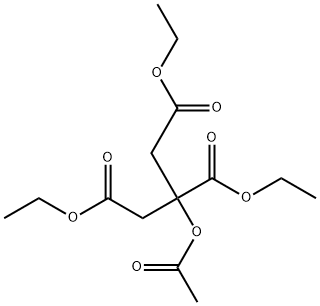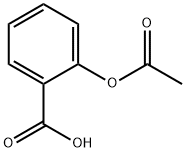Acetohydroxamic acid
Synonym(s):AHA
- CAS NO.:546-88-3
- Empirical Formula: C2H5NO2
- Molecular Weight: 75.07
- MDL number: MFCD00009994
- EINECS: 208-913-8
- SAFETY DATA SHEET (SDS)
- Update Date: 2024-05-08 14:18:51

What is Acetohydroxamic acid?
Absorption
Well absorbed from the GI tract following oral administration.
Toxicity
Oral, rat: LD50 = 4.8gm/kg. Symptoms of overdose include anorexia, malaise, lethargy, diminished sense of wellbeing, tremor, anxiety, nausea, and vomiting.
Description
Acetohydroxamic acid is a potent, non-competitive and irreversible inhibitor of bacterial urease (Ki≈lO-7M). This enzyme, which is widely distributed in plants and bacteria, but not in mammalian cells, catalyzes the decomposition of urea to ammonia. Elevated urinary ammonia levels can reduce the antibacterial effectiveness of a number of agents. Thus, acetohydroxamic acid is useful as adjunctive therapy to decrease urinary ammonia and alkalinity in patients with chronic urea-splitting urinary infection. Such infections are a leading cause of recurring complications and death in paraplegics.
The Uses of Acetohydroxamic acid
Urease inhibitorAcetohydroxamic acid acts as a drug, as an inhibitor of bacterial and plant urease, which is used for urinary tract infections. It is also used in organic synthesis. It acts as an antiurolithic and antibacterial agent. It is involved in the study of complexation of iron(III) with acetohydroxamic acid as well as in the inhibition study of lansoprazole and omeprazole on Helicobacter pyloni. It plays an important role in the insitu generation of nitrosocarbonylmethane as a Diels-Alder dienophile. In addition to this, it is used in the treatment of kidney stones and urinary tract infections.
What are the applications of Application
Acetohydroxamic Acid is An inhibitor of urease.
Indications
Used, in addition to antibiotics or medical procedures, to treat chronic urea-splitting urinary infections.
Background
Acetohydroxamic Acid, a synthetic drug derived from hydroxylamine and ethyl acetate, is similar in structure to urea. In the urine, it acts as an antagonist of the bacterial enzyme urease. Acetohydroxamic Acid has no direct antimicrobial action and does not acidify urine directly. It is used, in addition to antibiotics or medical procedures, to treat chronic urea-splitting urinary infections.
Pharmacokinetics
Acetohydroxamic Acid, a synthetic drug derived from hydroxylamine and ethyl acetate, is similar in structure to urea. In the urine, it acts as an antagonist of the bacterial enzyme urease. Acetohydroxamic Acid has no direct antimicrobial action and does not acidify urine directly.
Metabolism
35-65% of oral dose excreted unchanged in urine (which provides the drug's therapeutic effect).
Properties of Acetohydroxamic acid
| Melting point: | 88-90 °C (lit.) |
| Boiling point: | 133.7°C (rough estimate) |
| Density | 1.2269 (rough estimate) |
| storage temp. | Keep in dark place,Inert atmosphere,Room temperature |
| solubility | Methanol (Sparingly), Water (Sparingly) |
| form | Crystalline Solid |
| color | White to pale yellow |
| Water Solubility | Soluble in water. |
| Sensitive | Hygroscopic |
Safety information for Acetohydroxamic acid
| Signal word | Danger |
| Pictogram(s) |
 Health Hazard GHS08 |
| GHS Hazard Statements |
H360:Reproductive toxicity |
| Precautionary Statement Codes |
P201:Obtain special instructions before use. P280:Wear protective gloves/protective clothing/eye protection/face protection. P308+P313:IF exposed or concerned: Get medical advice/attention. |
Computed Descriptors for Acetohydroxamic acid
| InChIKey | RRUDCFGSUDOHDG-UHFFFAOYSA-N |
New Products
3-N-BOC-(S)-AMINO BUTYRONITRILE 4-Piperidinopiperidine N-Benzyl-3-hydroxypiperidine 2-Methyl-4-nitrobenzoic acid 2-(4-bromophenyl)-2-methylpropanoic acid 4-Acetyl-2-methylbenzoicacid Acetyl-meldrum's acid Ethyl-4-Pyrazole carboxylate 2,6-Pyridinedimethanol 5,7-Dichloro-3H-Imidazo[4,5-B]Pyridine 5-Bromo-2-Methoxy-4-Methyl-3-Nitropyridine 2-Fluoro-5-Iodopyridine 2-Fluoro-5-Methylpyridine 2-Chloro-3-Bromo-5-Amiopyridine METHYL-4-(BUTYRYLAMINO)3-METHYL-5-NITROBENZOATE TRANS-CYCLOBUTANE-1,2- DICARBOXYLIC ACID 5-Nitro indazole R-(-)-5-(2-AMINO-PROPYL)-2-METHOXY-BENZENESULFONAMIDE 1,3-cyclohexanedione 4-Aminophenaethylalchol (S)-(+)-4-BENZYL-2-OXAZOLIDINONE 3-NITRO-5-ACETYL IMINODIBENZYL 4-FLUORO PHENYL MAGNESIUM BROMIDE 1.0 M IN THF 1-HYDROXY-4-METHYL6-(2,4,4-TRI METHYL PHENYL)-2-PYRIDONE MONO ETHANOL AMINE(PIROCTONE OLAMINE)Related products of tetrahydrofuran








You may like
-
 2-Bromo-5-Iodopyridine 73290-22-9 98%View Details
2-Bromo-5-Iodopyridine 73290-22-9 98%View Details
73290-22-9 -
 141-86-6 98%View Details
141-86-6 98%View Details
141-86-6 -
 4-Amino-2-Chloropyridine 14432-12-3 98%View Details
4-Amino-2-Chloropyridine 14432-12-3 98%View Details
14432-12-3 -
 16867-03-1 2-Amino-3-Hydroxypyridine 98%View Details
16867-03-1 2-Amino-3-Hydroxypyridine 98%View Details
16867-03-1 -
 2,3-Diamino-5-Chloropyridine 25710-20-7 98%View Details
2,3-Diamino-5-Chloropyridine 25710-20-7 98%View Details
25710-20-7 -
 13466-41-6 98%View Details
13466-41-6 98%View Details
13466-41-6 -
 Ammonium HexachloropalladateView Details
Ammonium HexachloropalladateView Details
19168-23-1 -
 50-00-0 Formalin; Methanal 0.99View Details
50-00-0 Formalin; Methanal 0.99View Details
50-00-0